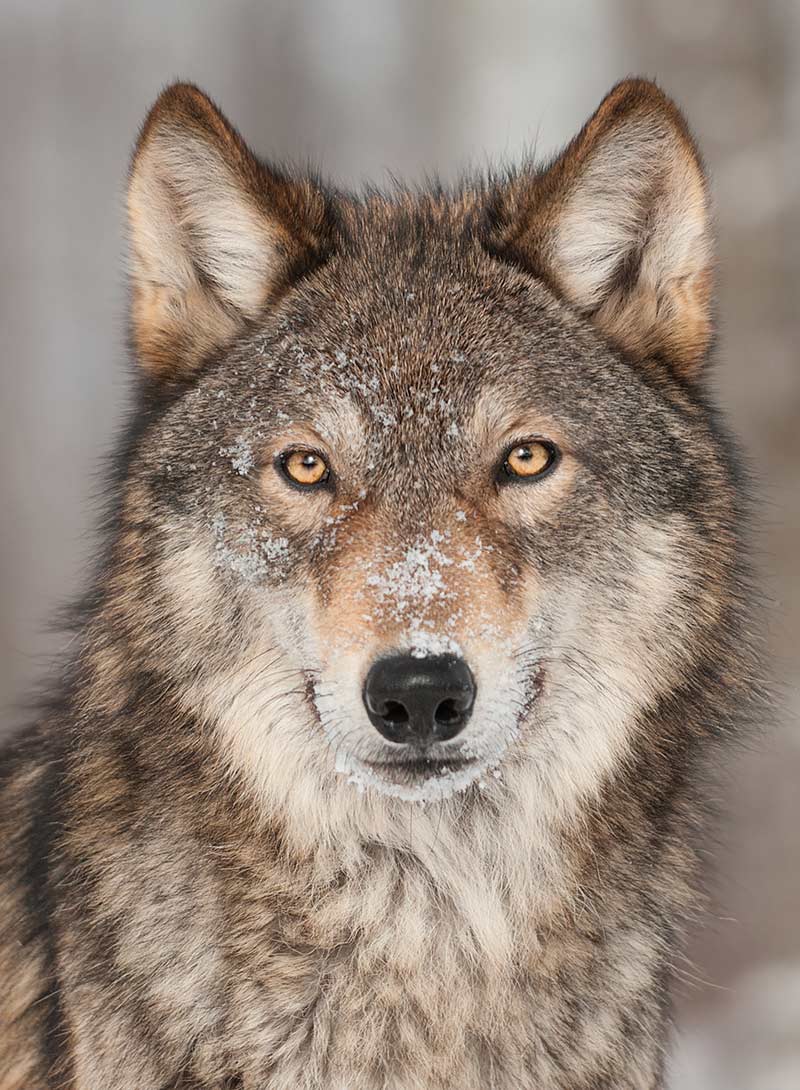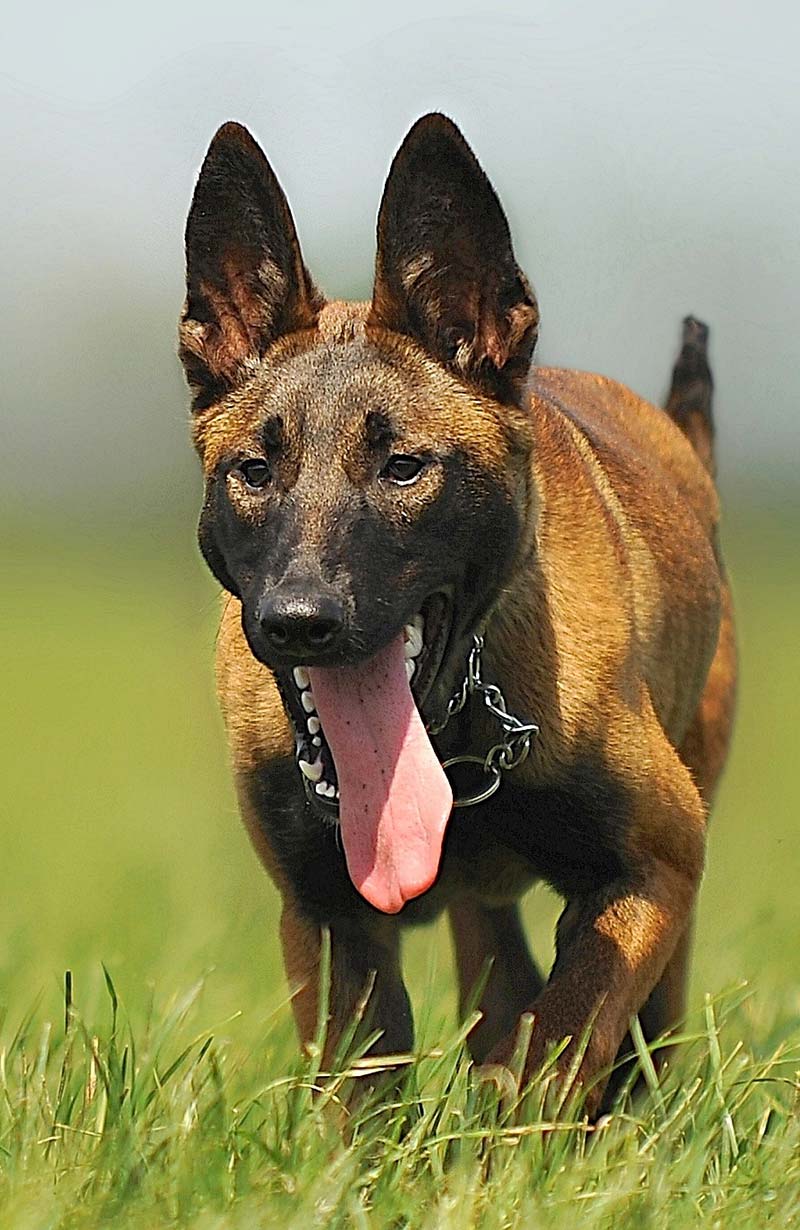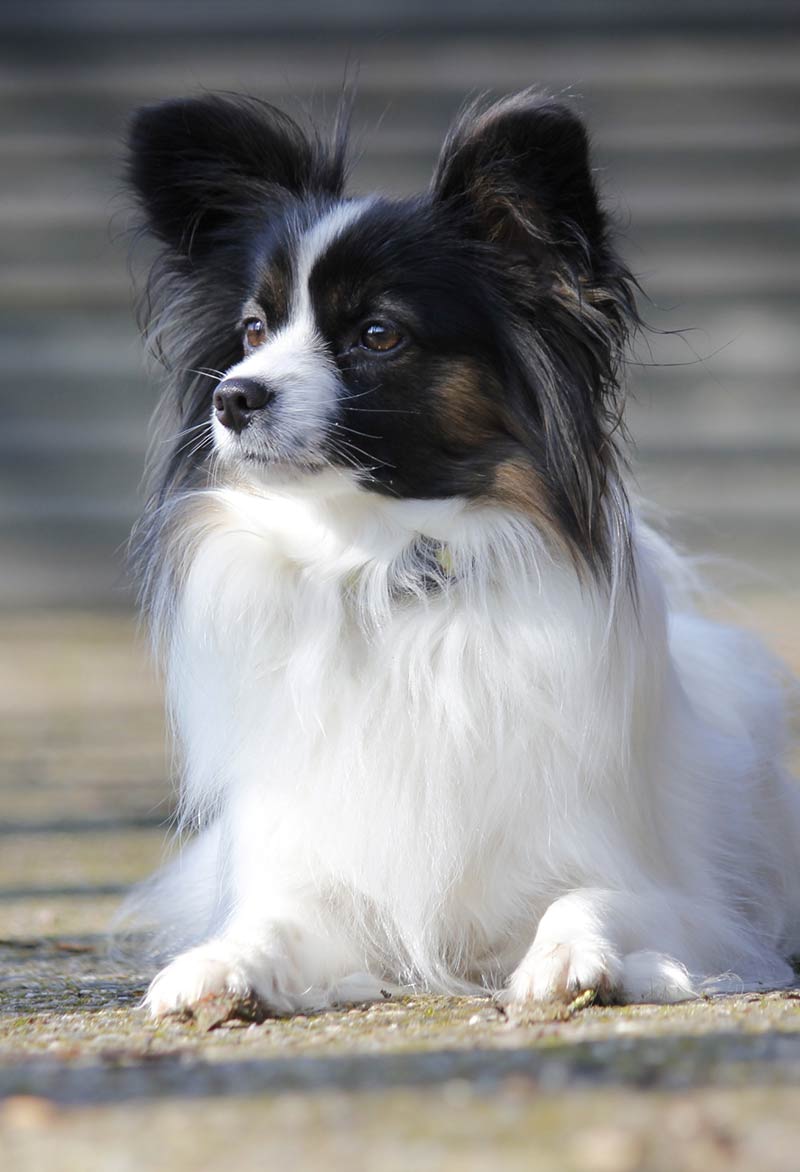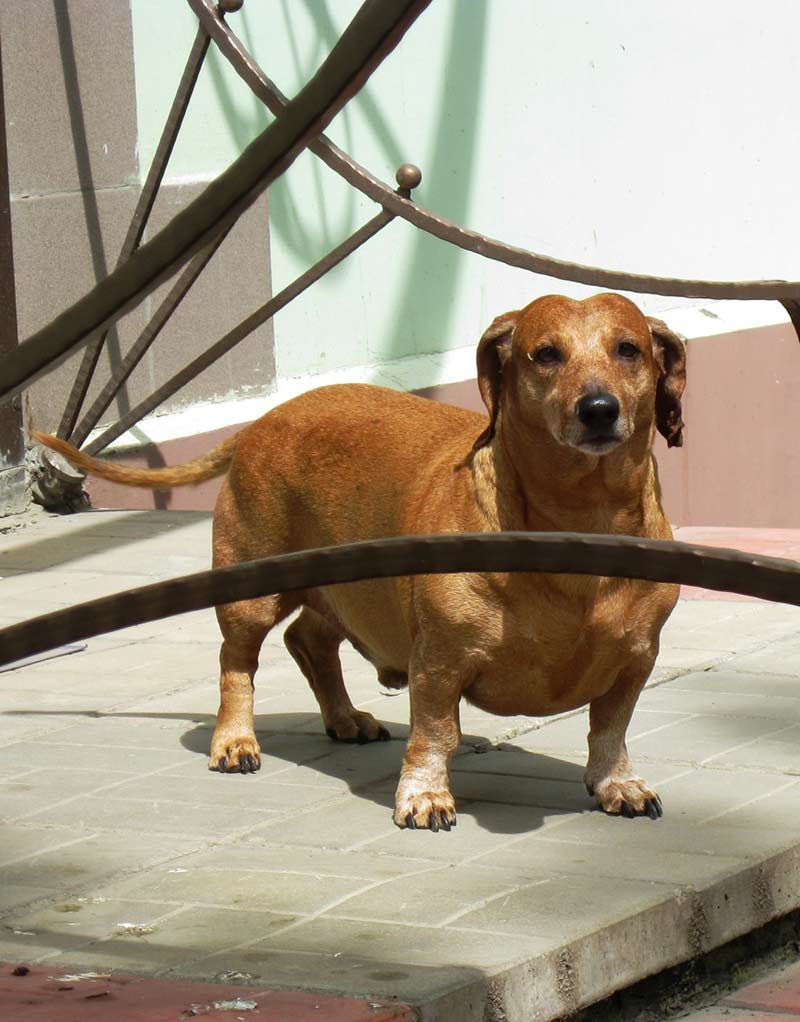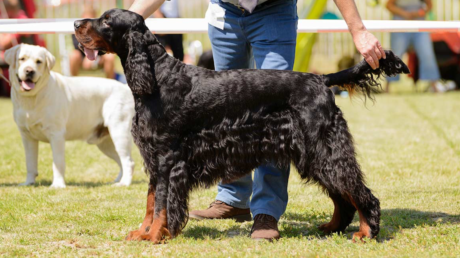
Today, we are going to look at dog conformation.
We’ll define what dog conformation means, look at the purpose of conformation and conformation dog shows, and at the problems that conformation can cause our dogs.
Let’s dive straight in and look at the meaning of conformation
Dog conformation definition
Conformation is the shape and structure of your dog. The way he is constructed from the ground up. It’s about the shape of different parts of his body, from his head to his tail. It’s about the structure of his legs, his paws, his shoulders and his spine, and their relative proportions to one another.
Dog conformation is about the dog as he looks, appears, or feels if you run your hands across his body not about what goes on inside your dog. But it is acknowledged that conformation has far reaching effects on those things. So we’ll be looking at that too.
In the dog world, conformation has become synonymous with ‘showing’ or ‘exhibiting’ dogs. And we are going to look at that in more detail in a moment.
First let’s look at how dog conformation has changed and become so diverse over the last few hundred years
Different types of dog
Every pedigree puppy born, is destined to look and behave in a particular way. Thus huskies have pricked up ears, thick coats and enjoy pulling sleds
Gundogs have floppy ears and love hunting and retrieving things. Greyhounds have long legs and run really fast. And so on.
Obviously, within this predestined and simplistic blueprint, there is room for variation. But on the whole, the structure of your puppy, the way he is put together, the length of his leg relative to his back, or his muzzle relative to his spine, these structural characteristics are decided before he is born. They are features of his own unique pedigree ‘breed’.
Who decides what a pedigree dog looks like?
So who decides what a pedigree dog should look like? Or did they just evolve over the years, until people put them into categories? Well, one thing we know for certain is that dogs did not evolve naturally into all the varieties we see today.
Evolution spent many thousands of years working on our dogs’ ancestors – and those thousands of years of natural selection produced a very beautiful and successful animal. The Grey Wolf.
A wolf in dog’s clothing
Dogs are genetically wolves. We now know this to be true from DNA studies. In fact dogs have now been re-classified to reflect our current knowledge.
Instead of being classified as Canis Familiaris (domestic dog), as they were twenty years ago, in 2005, dogs were formally returned to the species they came from and are classified as Canis Lupus – the grey wolf.
We tag ‘familiaris’ at the end of that to differentiate dogs as a modern branch or subspecies of the grey wolf line – Canis Lupus Familiaris – the domesticated grey wolf.
From wolf to dog
One of the characteristics of each of the species of animals that we find living in the wild, is the similarity between individuals that belong to the same species.
Dogs on the other hand, whilst all belonging to one species, have become as varied and different as they have, because people have removed them from the forces of evolution and intervened in their breeding choices.
In the wild for example, the wolves with the healthiest ear shape, leg shape, coat length and so on, would be advantaged and more likely to survive.
Once wolves were offered the shelter and protection of human beings, they were no longer dependent on the healthiest conformation for their survival.
The forces of natural selection were switched off and wolves were free to become dogs, with the infinite variety of shapes and forms that we know today
A predictable dog
Amidst all the variety that we have created by protecting dogs from natural selection, are many ‘breeds’ of dogs where the individual resemble one another, in just the same way that members of the same species resemble one another in the wild.
There are huge benefits to the pedigree dog breeding ‘system’ that we have set up, breeding like with like. Most of which lie within the concept of a predictable outcome.
We know when we buy a cocker spaniel puppy that he won’t grow too big to fit through the kitchen door. That he’ll have long floppy ears, and lots of energy.
We know that a Papillon will be a little dog with big ears. And we know when we buy a labrador puppy that he’ll probably be a fairly large and good natured dog with a short easy care coat and a passion for fetching things and swimming.
Early dog breeding clubs and groups
The ability to predict an outcome is a useful one. And as dog ownership and dog breeding became more widespread, groups of people that have an interest in each specific type of dogs sprang up. These were the first dog clubs and over time they developed a way to control and monitor their breeding programs.
Not only were they interested in the way their dogs performed, how fast they ran, how strong they were, and how much stamina they had. They were also interested in recording and monitoring the appearance of their dogs. And in achieving an even more reliable and predictable outcome from their breeding programs. One of their inventions, was the dog conformation show.
What is a dog conformation show
A conformation dog show, is a show where pedigree dogs are assessed. They are judged not on any skill or ability, but on their body structure and shape. In other words, these purebred are assessed and awarded a score, according to how closely that body shape meets the standard for their breed. The AKC describes the true purpose of the conformation show as being to “evaluate breeding stock”
Only purebred pedigree dogs are allowed to enter conformation shows. And the AKC explain that this is because the appearance and structure of a dogs “is an indication of the dog’s ability to produce quality purebred puppies”
Conformation dogs shows – how they work
Dogs entered into conformation shows are expected to demonstrate the way they move as well as to be physically examined by a judge. Each dog’s owner is expected to display a dog in great condition and to show him at his best. The judge’s role is to assess the dog and decide how well he or she matches up to the breed standard.
The original Kennel Club (KC) in the UK explains that the breed standard “represents the ideal conformation and characteristics for that breed. At shows, the Judge must compare each dog with the Breed Standard to find the dog nearest to that ideal picture of the breed.”
The purpose of assessing conformation
Because conformation has a massive impact on a dog’s capacity for movement and on how athletic (or not) he is, conformation is closely tied up with a dog’s health and performance. At one time conformation was purely considered in terms of its impact on a dog’s performance.
For example: the depth and spring of a sighthound’s chest were designed to hold big lungs and a powerful heart. Together with long legs and a flexible spine and streamlined body, this conformation was designed to facilitate massive bursts of speed
Somewhere along the line, mostly during the late 1900s, the ethos of dog conformation showing underwent some subtle changes and conformation in some breeds began to lose its close ties with performance.
No longer were the standards by which dogs are judged tied to a particular purpose, now we began to see new standards emerge, and old standards be interpreted in new ways. These new ways were disconnected, or much more loosely connected, with any role or purpose. And in some cases actually worked against the dog, in terms of health and ability.
The Bulldog’s slightly jutting lower jaw and recessed nose, for example served the original purpose of enabling the dog to breath while he gripped a mouthful of flesh and skin. But has become so exaggerated that it now interferes with his ability to breath normally.
This has happened because of the changing way that the breed standard for these dogs is being interpreted and because of the types of dogs to which judges are now giving awards. And the changes we are seeing have taken place quite rapidly.
Fit for function
Many of our early breeds were designed with a specific function in mind, spaniels for flushing game, retrievers for fetching it, sheepdogs for herding, pack hounds for hunting in packs, sighthounds for coursing.
In times gone by any dog not fit for purpose would have been culled without question. Mankind created a kind of artificial ‘evolution’ by selecting the most suitable dogs for his purpose. In this way, these functional breeds remained strong and healthy. And they looked quite similar partly because they served a similar purpose
The process of domestication
As the years of domestication passed, dogs with separate functions became more distinct and different from dogs with different functions. Initially there was still much intermixing between the different groups, but gradually they became more isolated from one another, and eventually people formed groups or ‘clubs’ for those interested in breeding each particular type of dog to join.
As leisure time increased, two very important changes came to pass that would affect our canine companions profoundly. Some breeders began to breed for a hobby rather than to produce a dog for a job. In other words they began to breed for appearance and not function.
No longer was leg length and spring of rib determined by a need for speed. Nor was coat length and density determined by a need for warmth and protection from the environment.
We began to change or exaggerate the shape of dogs because, well because we could. Rather than because we should. And more recently, breeders decided to isolate the individual breeds from one another, and to prevent breeding between individuals of different type. Permanently.
The separation of the breeds
This separation and isolation of the various dog breeds was formalized through the association of the breed clubs with an umbrella organization, the Kennel Club. One by one, over the last hundred or so years, the breed registers have been closed.
Once a breed is recognized by the kennel club and its register closed to prevent inter breeding, that breed is genetically isolated. This genetic isolation has profound effects on any population. We look at the effects of isolating a gene pool in other articles, but in this one, we are going to focus on what happens when we stop breeding for function and began breeding for appearance.
Breed standards
So, to sum up so far, it isn’t evolution, or any kind of natural accident, that determines what your dog looks like at all, but rather a written blueprint or set of standards decided on by people (members of the breed club which governs the breeding policies of your particular breed). We call this blueprint – the breed standard. And in each standard is a clear and precise description of the dog conformation required.
All our breed standards have been formalized and adopted by their relevant clubs, in the last one hundred and fifty years. This is a very short period of time, bearing in mind that people have been living with, working with, hunting with and sharing their firesides with dogs, for at least 15,000 years. Recent evidence suggests that domestication may have begun even 30,000 years ago.
We don’t really know yet, what the long term effects of breed separation and isolation, will be. This is something that many scientists are concerned about. Along with the increasing tendency to exaggerate breed standards. With sometimes disastrous effects.
Exaggerations in conformation
The breed standards describe the conformation of a dog. What he should look, and even behave, like. From the length of his coat, to the pace of his stride, the shape of his face, the turn of his tail. They even describe aspects of his character, how friendly he is, for example. These characteristics are all set down in the breed standard.
This all seems like such a good idea, an important part of being able to predict the outcome of matings between individual dogs. But somewhere along the way, we have gone astray. Breeders in some breeds have become caught up in a spiral of exaggerating structural characteristics of our breeds. If short legs are good, then even shorter ones must be better. If loose skin is good then let’s have even more of it.
Flat faces are cute, so let’s make them even flatter. More and more dogs have become more and more exaggerated. To the point where in some breeds, the average member of the public no longer sees a dog, they see a disaster. A parody of a once proud animal. The inability of some breeders to take a step back and view their handiwork objectively, is referred to as ‘breed blindness’ and it is a very big problem for some dogs.
For the truth is that the conformation of some breeds of dog is now so exaggerated that it compromises the health of all puppies born into that breed
Breeding for disability
We now have breeds of dog so deformed by humans selecting increasingly extreme individuals that they are effectively disabled. We have dogs with so little muzzle that they cannot breath efficiently or cool themselves properly. We have dogs with legs so short and backs so long that they are subject to horrible spinal problems.
We have dogs with so much skin that they cannot keep themselves clean, dogs that cannot give birth naturally, mate naturally. All as a result of their structure. A structure that is decided by human beings and enshrined into a breed standard.
Choosing a dog with a healthy structure
Health and happiness are inextricably intertwined. If you want a happy dog, you need to purchase a healthy puppy from a breed whose structure is not compromised by its own breed standards, or by the interpretation of those standards by breed club members.
So how do you go about finding such a dog? The answer lies partly in the genes of the domestic dog. Remember, your dog is genetically a wolf. Canis Lupus is his species, just like his wild cousins.
We know that to survive in the wild, a dog needs to be in superb shape. So let’s look at the structure and proportions of the wolf to see what makes a healthy body for our four legged friends.
What shape is a healthy dog?
The wolf has legs in proportion to the length of his back. His legs and spine form three sides of a square. This keeps him free from spinal problems. He has a long muzzle to enable him to breath freely and cool himself in hot weather. His ears are upright to aid hearing and to allow the air to circulate and keep the outer ear cavity free from infection.
He has no loose skin around his eyes, which are set deeply into their sockets, this gives him maximum protection from injury. His tail is free from tight twists and kinks, demonstrating the his vertebrae are healthy and well formed.
The border collie puppy in the photo at the top of this page is an example of a dog whose conformation fits the basic shape and structure required for good health. But there are many other breeds that fit these criteria.
Messing with nature?
These then, are the components of a well structured dog. We can mess with them to some extent without causing too much harm.
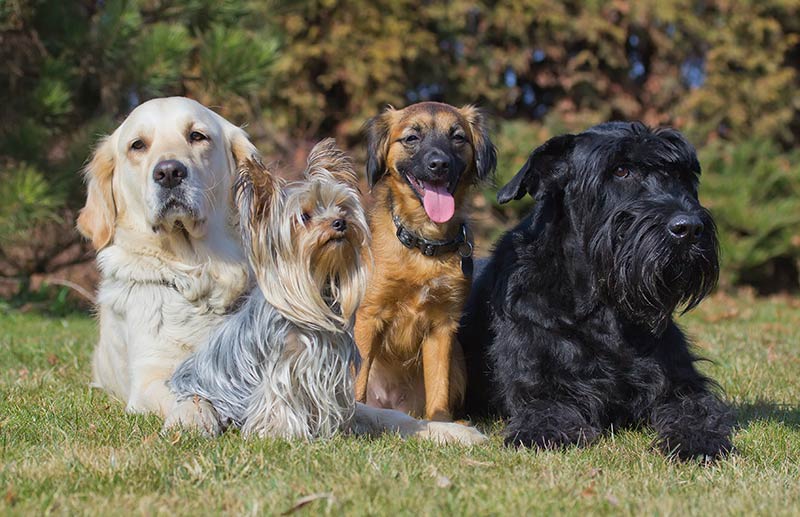
Dogs with floppy ears are a little more prone to ear infections. Dogs with floppy ears may be a little more prone to ear infections than their wild cousins, though most will be fine with a little care. We can shorten the leg length a little, in proportion to the back, but not much, or spinal problems will rear their heads.
We can make the dog a little bigger or a little smaller than a wolf, but extremes in size cause problems too with very large dogs having significantly shorter life spans. Essentially, we mess with nature at our peril, or at the dog’s peril.
Dog conformation – a summary
Pedigree dogs arose out of our need for a predictable outcome. Not just in terms of performance, but also in terms of appearance or conformation. At first performance was the priority.
Over time, in many of our pedigree breeds, performance has become secondary to conformation. And conformation now rules supreme. We also now have breeds that have been created purely as companions, that have never had any other role or purpose. The conformation of these breeds is down to human preference.
We can do what we like with dogs. They are absolutely at our mercy. We can create giant dogs, and tea cup dogs, short dogs, wrinkled dogs, flat-faced dogs and long nosed dogs, and so much more. We can, but should we?
I can’t answer that question on your behalf. But I can tell you that the structure of your dog will have a significant bearing on his health and well-being, and possibly on your wallet, for many years to come. It pays to chose your dog breed wisely
Selecting a breed that is neither very huge nor very tiny, is a good idea. Avoiding breeds with very shortened faces or excessively loose or wrinkled skin is another good idea.
You’ll find a great list of key dog conformation types to avoid in this article: 8 things to avoid when choosing a dog. Together with a deeper exploration of the issues involved.
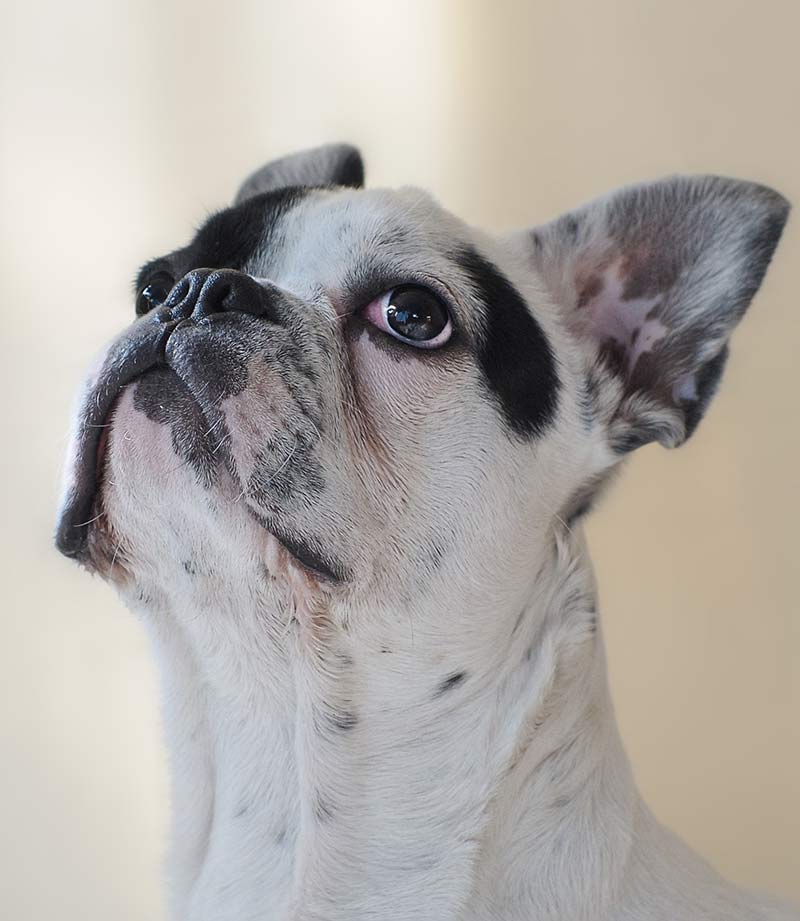
Many people find dogs with flattened faces very appealing. We all have preferences based on appearance, but it is important to be discerning.
It is nice to have a dog that comes in an cute ‘container’. But in many cases, the price you and your dog will pay by rejecting the basic shape of a healthy dog, will be a high one.



